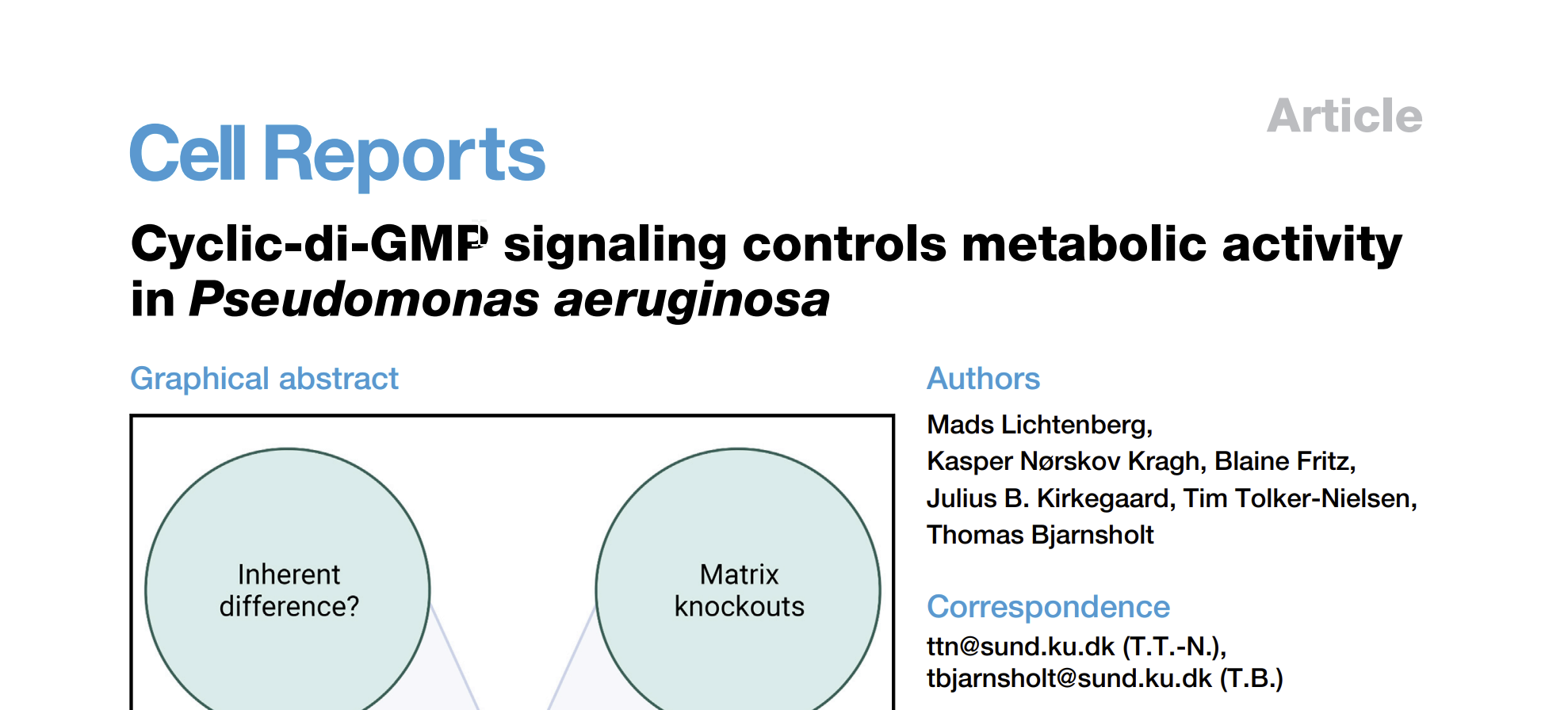- Home >
- News / Event >
- NEW PUBLICATION: Bacteria control their metabolism when going into biofilm formation
NEW PUBLICATION: Bacteria control their metabolism when going into biofilm formation
18th October 2022

– This shift in metabolism has strong implications for tolerance to antibiotics
(STOCKHOLM) Symcel — a company providing real-time metabolic measurements of living organisms with their analytical instrument the calScreener™ ̶ is happy to announce the publication of a new peer-reviewed publication by Lichtenberg et al.
The research team is well known for their high-impact work in the field of biofilm and chronic infections. In this latest publication using the calScreenerTM, they show that cultures of the bacterium Pseudomonas aeruginosa have a very specific and reproducible metabolic response as they make the transition from planktonic cells into biofilm. This response is triggered by the bacteria themselves using the well-known signalling molecule Cyclic-di-GMP.
In their work published today in Cell Reports, the team described how in response to cyclic-di-GMP, bacterial populations exhibit a burst of metabolic activity followed by a prolonged period of low metabolic activity as they enter the biofilm state. The burst of metabolic activity is correlated with the production of extracellular matrix components used to form the protective biofilm matrix. The subsequent low metabolic activity is associated with an overall decrease in cellular activity that is exhibited during biofilm formation.
Dr. Mads Lichtenberg authored the study and explained, “We show that the initial formation of biofilm, where they produce high amounts of matrix components, is associated with high metabolic costs. It’s maybe not so surprising that it’s energetically costly to produce these components but it is rarely discussed that the formation of biofilm comes with a price.”
The low metabolic activity is caused by a reduction in cellular processes which can cause antibiotics to lose their activity. Most antibiotics target active cellular processes such as DNA replication or cell wall synthesis. With the bacterial cells being in a partially dormant state, there is no way for the antibiotics to work. In effect, it’s like trying to jam the cogs of the bacterial machine while it is stationary.
The ability to modulate their own metabolism has clear survival advantages for bacteria and understanding more about their metabolic state can help us to develop new treatment strategies in the future.
ENDS
For more information, please contact Ben Libberton (ben.libberton@symcel.com)
www.symcel.com and follow Symcel on LinkedIn and Twitter for our latest news.
About Symcel
Symcel is leading a new era in metabolic measurements for use in R&D, rapid diagnostics and improved therapies. Symcel provides a novel cell-based assay tool for real-time biological activity measurements based on a powerful technique called isothermal microcalorimetry. Their solution is a fast, label-free phenotypic screening technology for direct measurements on cell behavior and drug responses. Symcel was founded by leading authorities in microcalorimetry and the current team at Symcel has extensive experience within the biotechnology industry and diagnostics.

STAY UP-TO-DATE
Subscribe to our newsletter and stay up to date with the latest news and updates